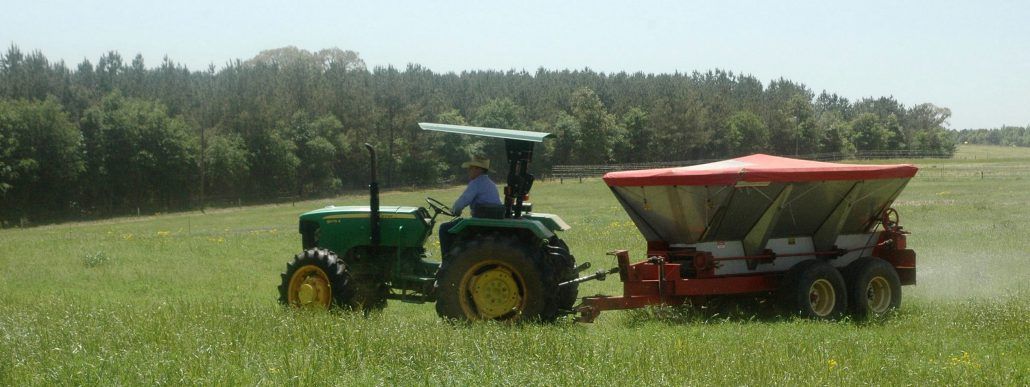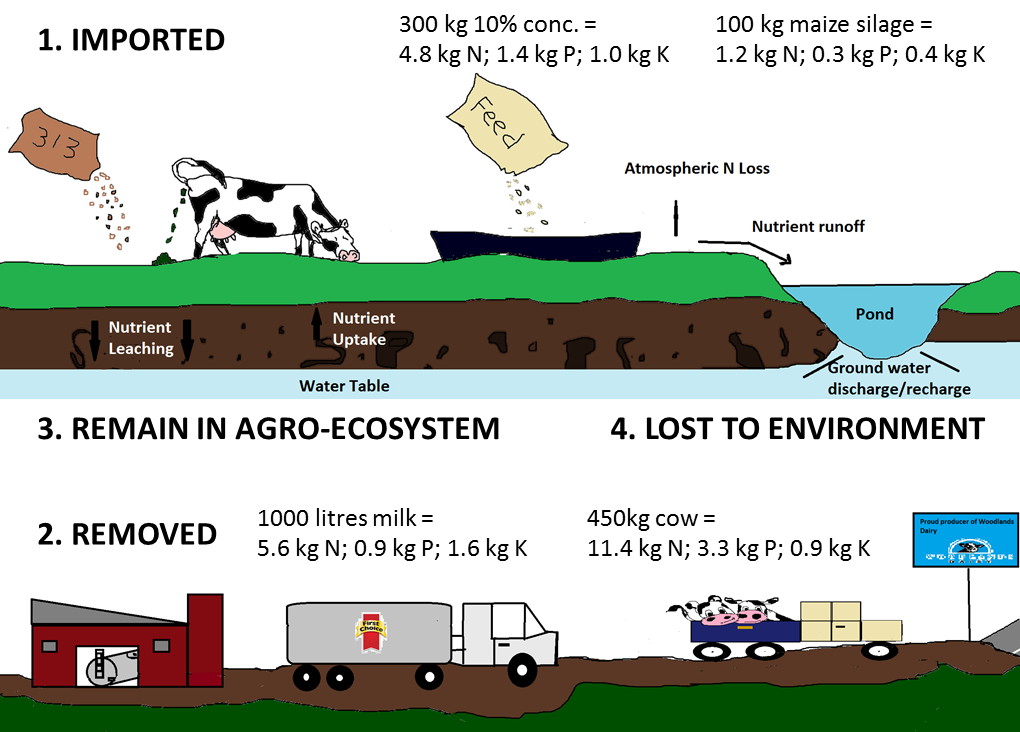Photo by AgriLife Today / CC
On any farm there is a cycling of nutrients (e.g. nitrogen, potassium, phosphorous, calcium, magnesium, sodium and sulphur) between the soil, plants and the animals which eat these plants. These nutrients are important for growth and production in both plants and animals. This cycle of nutrients is not a closed system within a farm though. Nutrients can be brought into the system, either naturally (e.g. mineralisation or nitrogen fixation) or through artificial sources (e.g. fertilizer), or lost. They can be lost through removal of products (e.g. crops, animals) or naturally (e.g. leaching).
On a dairy farm this cycle takes place specifically between soils, pastures and dairy cows. Some of these nutrients are removed from the farm in the form of milk or in the bodies of animals which are sold. Many nutrients are brought onto the farm as well, in the form of fertilizers and feed (concentrates and roughage). It is important to ensure that there is a balance between what nutrients are brought onto the farm and what nutrients are removed from the farm.
Many nutrients are wasted on dairy farms due to oversupply through inputs from fertilizers and feeds. A great deal of nutrients, and therefore money, can be saved by recording and monitoring what nutrients are removed from the farm and what nutrients are brought onto the farm. This will allow a farmer to balance the nutrients and provide an account for the addition and removal of nutrients on the farm.
In addition to increasing efficiency of nutrient use on the farm, accounting for nutrient inputs and removal results in less waste of nutrients. This ensures fewer excess nutrients which often end up polluting freshwater resources. The pollution of groundwater and rivers by excess nutrients has a very negative environmental impact1. These water resources are important to long term agricultural success and therefore ensuring minimal pollution through excess nutrients is imperative for sustainable agricultural practices.
What happens to nutrients on your farm?
Design by Portia Phohlo
References:
- Spears RA, Kohn RA & Young AJ. 2003. Whole-farm nitrogen balance on western dairy farms. Journal of Dairy Science 86:4178-4186.
- A carbon footprint assessment for pasture-based dairy farming systems in South Africa - 2024-02-07
- What progress have farms participating with Trace & Save made over the past 10 years? - 2023-09-06
- Carbon footprint reduction over time: Lessons from pasture-based dairy farms in South Africa - 2023-09-04


